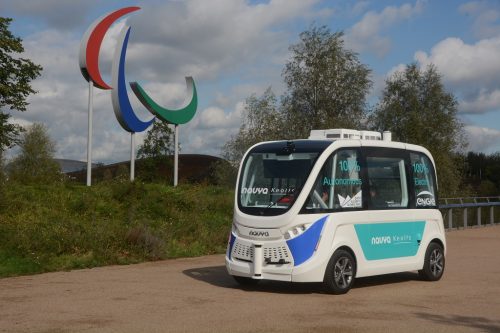
The route used by the Navya Arma in the Queen Elizabeth Olympic Park passed this symbol of the Paralympic Games. ANDY IZATT
Like the drive for electric urban mobility, the development of autonomous transport has the potential to significantly change how we travel. An autonomous shuttle bus which is also fully electric has just completed a trial in east London and Andy Izatt went along to see how it performed
The longest trial in the UK to date of an autonomous shuttle bus has just been completed by Queen Elizabeth Olympic Park in east London. A Navya Arma was operated between 1000hrs and 1700hrs on 18 days throughout September. It missed one day because of technical issues.
French technology company, Navya launched the fully autonomous and electrically driven Arma in October 2015. Up to 15 passengers, 11 of them seated, can be carried by a vehicle that has a top speed of 28 mph.
Multinational automotive supplier, Valeo, Group 8 and Keolis, the largest private sector transport group in France, have taken equity stakes in Navya alongside original shareholders, Gravitation, Cap Décisif Management and Robolution Capital.[…]
By subscribing you will benefit from:
- Operator & Supplier Profiles
- Face-to-Face Interviews
- Lastest News
- Test Drives and Reviews
- Legal Updates
- Route Focus
- Industry Insider Opinions
- Passenger Perspective
- Vehicle Launches
- and much more!


